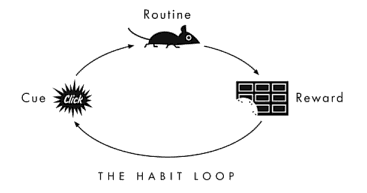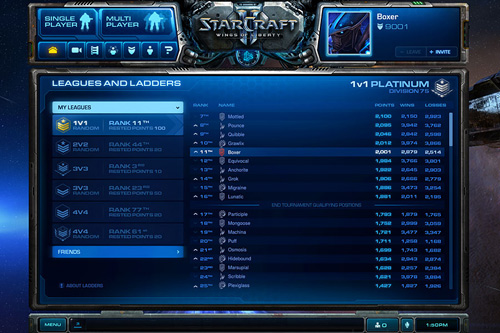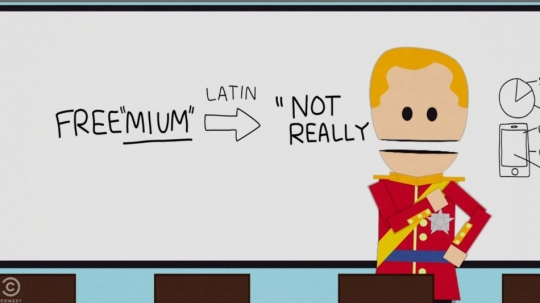3 Neuromarketing Lessons from Video Games
This is a guest post by Zane Claes.
Games are uniquely adept at leveraging human psychology to motivate behavior. We play them for hours on end and enter into a state of flow with an ease not found in other fields. This is no accident: during my time studying game design and working in the field, neurological language like “dopamine hits” and “social proof” were commonplace. In this post, I’ll examine some of the common tools used by video game designers in order ensure engagement and ultimately drive sales.
1. Reward Escalation and Variability
The “core loop” of a video game is the task which a player repeats over and over again, becoming better each time, in order to excel at the game. Fundamentally a core loop needs only to involve a challenge and a reward. For example, in a role playing game like Zelda, a single level represents a major core loop: each stage is spent beating a challenge (a dungeon/boss) which is followed by a reward (a new weapon). In his book “the Power of Habit,” author Charles Duhigg uses this exact same model to describe how habits are formed, explaining why video games are habit inducing (some would say “addictive”). From his book:

Two major neurochemical reactions are at play, here. First there is the adrenaline induced by the challenge itself, and second there is the dopamine involved in anticipating reward. Video game designers start games with small challenges and frequent rewards, in order to give the player a taste of these sensations, and gradually begin to make the challenges harder and the rewards further apart. Over time, they may also use reward variability to create additional anticipation and dopamine release (some games even take this so far as to introduce slot-machine or other gambling mechanics, the ultimate exploitation of reward variability).
Lesson for marketing: customers do not become advocates for your brand due to a single good experience; building a habit loop and becoming part of your customer’s routine will make them feel an attachment to you and your product.
2. Social Proof and Collaboration
Single player games, which offer no opportunities for competition or cooperation between players, rely on players becoming excited enough to want to share the game in order for the game to grow. This worked well in cases like Flappy Bird, but such examples are the exception rather than the rule. Multiplayer features are so popular in today’s gaming culture because they offer the game designer a way to engineer social elements into the game.
Game leaderboards are one of the earliest and most obvious examples of the use of social proof in video games. In “the small BIG,” it is suggested that an ideal use of social proof is to “simply and honestly depict what the majority of others who are similar to your target audience are already doing that you would like your audience to do, too.” If you’ve ever spent time in an arcade or watching gamers, you know that the leaderboard can use this to transform the arbitrary concept of “points” or “score” into something that players are willing to spend days and days attempting to one-up each other for. In essence, the social proof provided by leaderboards says “this is fun, and other people are willing to put their own time into it.”

More sophisticated use of social components in video games provide mechanisms by which the product becomes innately more fun when there are other people to play with. “Co-op” mode is an example of a time where a challenge is too large to surmount alone, but suddenly becomes achievable with friends. “Guilds” frequently offer no other benefits than being able to associate with other players, and huge communities of devout gamers have sprung up around the culture of joining and playing within online guilds. As a result, players bring their friends into new games because they will collectively have more fun.
At a talk given by Zynga about Words With Friends at the 2010 Game Developer’s Conference, the presenter discussed the massive increase in engagement/virality simply by placing friends’ faces next to relevant actions. What they found is that accurately representing achievements, leaderboards, scores, etc. with this highly visual social cue (a Facebook picture as opposed to other things like names) social proof had a greater impact. So powerful is this effect that Zynga created an entire series of games with the “… with Friends” suffix.

Lesson for marketing: build something into your product that enhances its innate value by virtue of friends using the product, so that customers will want to share the product, and make sure the mechanisms for sharing include social context.
3. Time, Money and Sunk Costs

Recently, the video game industry has seen a rise in “freemium” video games, where the player does not need to pay anything up-front but can choose to buy things for in-app purchases down the line. Putting aside the question of if this model is ethical (humorously addressed by South Park in the recent “Freemium Isn’t Free” episode), it employs some very basic psychology. A player who has played a game for many hours for free will reverse-justify his use of time and equate it with money. Consciously or not, the fact that he has poured so much time into the game will make him more likely to spend money. One would imagine that the narrative would sound something like this: “I put 10 hours into this game, and only a fool would invest so much time into a bad game, and I’m no fool, so this game must be good and therefore worth something.”
Some unscrupulous game designers will then go a step further, leveraging the sunk cost fallacy in order to exploit this sunk time. They will hold past progress hostage behind a paywall if the player wants to continue playing. Another tactic is to leverage loss aversion by allowing the player to escape a situation where he would lose game progress by paying money. For example, some games will cause the player to forfeit a hard-earned piece of equipment or unit when he dies or loses a level… unless he pays up.
Obviously I discourage the use of the more exploitative of these tactics, yet there is still something to be learned from the basic principles.
Lesson for Marketing: users will value your brand and your product the more of their own time they spend on it; don’t be afraid to find ways to get people to spend time on your site even if there’s no clear monetization (see also: the mere exposure effect).
Conclusion
These are just some of the techniques used by video game designers. Game design is a field which is constantly adapting as new platforms emerge and new developers come along to find ways to best leverage new ideas. Zynga gained fame on the crest of the social gaming wave, yet they became convinced that they could create an “equation for fun” and systematize the game design process. This lost sight of the basic truth that people crave novelty, and the exact techniques that worked before will not necessarily work again. Yet, the underlying principles of human psychology are immutable: smart neuromarketers and game designers just find ways to leverage them in new ways.
